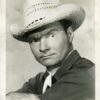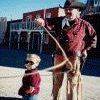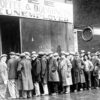Early History of Naturopathy
![]()
The Nature Cure Movement began in Europe, early in the nineteenth century. Vincent Priessnitz, born in 1799 in Grafenburg, Silesia, a farmer’s son, noted for his intelligence and excellent powers of observation, became interested in the behaviour of sick animals. He found that in the main these animals did not eat during their sickness and tried to get to streams and rivers to bathe in the running water. Some time later, Priessnitz was injured in an accident, suffering a leg injury that proved unresponsive to medical treatment. Remembering how sick animals behaved in similar circumstances, he evolved a method of water treatment that in time returned his leg to normal use. He subsequently gained a reputation as a healer by water and he gradually built an establishment which could deal with one thousand patients at a time. This was the beginning of hydrotherapy, which later spread all over the world. A Bavarian monk, Father Sebastian Kneipp (1821-1897) popularized hydrotherapy in the Austro-German area, and wrote one of the best known books on the subject, ‘My Water-Cure’.
A contemporary of Priessnitz’s, Johann Schroth, was the first modern naturopath to employ clinical nutrition, or the use of diet as a therapy. His treatment, the Schrothkur, or dry diet, is still much used in central Europe. He has been followed ever since by a great many who prescribed nutrition, food rotation, wholefood diets, dietary support or restrictions as part of naturopathic treatment. A number of practitioners trained by Priessnitz, Kneipp and Schroth made their way to America, and were soon involved in the fledgling naturopathic movement there. Pioneers such as John Harvey Kellogg, who together with his brother had developed the well known corn flakes for his patients at Battle Creek Sanitarium during the 1880s, set up a laboratory there less than a decade later to study the clinical application of hydrotherapy. This was to lead in 1902 to the publication of his ‘Rational Hydrotherapy’, which became the first, very exhaustive, scientific treatise of hydrotherapy. Others such as Isaac Jennings (1788-1874) and Sylvester Graham (1794-1851), Adolph Just (1853-1939) and Louis Kuhne (1823-1907), were all placing very great emphasis on what is now accepted as healthy dietary modification.
Also worth mentioning was the famous American naturopath Bernarr McFadden who was the founder of the modern physical culture school of health and healing, which he nicknamed ‘physcultopathy’. He compiled the superbly executed and well illustrated ‘Encyclopaedia of Health’ in eight volumes (3846 pages) which he published in New York in 1937. This naturopathic school of healing gave birth across the world to gymnasiums at which exercise programs, designed to allow the individual man or woman to achieve and maintain the most perfect state of health and peak physical and resultant mental condition. It was also the initial trigger for the proliferation of today’s outdoor trim parks and routine exercises like hiking, jogging, swimming and cycling.
Perhaps the man who has made the largest contribution to putting Nature Cure on a modem comprehensive and scientific basis was Dr H Lindlahr, who propounded the theory that “every acute disease is a healing effort of Nature”. Lindlahr did great work in coordinating all the different aspects of naturopathic treatments into one exact and complete science. He founded the Lindlahr Sanitorium in Chicago and wrote extensively. Two of his works were ‘The Philosophy of Nature Cure’ and ‘The Practice of Nature Cure’.
FacebookTwitterWhatsAppEmailLinkedInShare
Early History of Naturopathy
The Nature Cure Movement began in Europe, early in the nineteenth century. Vincent Priessnitz, born in 1799 in Grafenburg, Silesia, a farmer’s son, noted for his intelligence and excellent powers of observation, became interested in the behaviour of sick animals. He found that in the main these animals did not eat during their sickness and tried to get to streams and rivers to bathe in the running water. Some time later, Priessnitz was injured in an accident, suffering a leg injury that proved unresponsive to medical treatment. Remembering how sick animals behaved in similar circumstances, he evolved a method of water treatment that in time returned his leg to normal use. He subsequently gained a reputation as a healer by water and he gradually built an establishment which could deal with one thousand patients at a time. This was the beginning of hydrotherapy, which later spread all over the world. A Bavarian monk, Father Sebastian Kneipp (1821-1897) popularized hydrotherapy in the Austro-German area, and wrote one of the best known books on the subject, ‘My Water-Cure’.
A contemporary of Priessnitz’s, Johann Schroth, was the first modern naturopath to employ clinical nutrition, or the use of diet as a therapy. His treatment, the Schrothkur, or dry diet, is still much used in central Europe. He has been followed ever since by a great many who prescribed nutrition, food rotation, wholefood diets, dietary support or restrictions as part of naturopathic treatment. A number of practitioners trained by Priessnitz, Kneipp and Schroth made their way to America, and were soon involved in the fledgling naturopathic movement there. Pioneers such as John Harvey Kellogg, who together with his brother had developed the well known corn flakes for his patients at Battle Creek Sanitarium during the 1880s, set up a laboratory there less than a decade later to study the clinical application of hydrotherapy. This was to lead in 1902 to the publication of his ‘Rational Hydrotherapy’, which became the first, very exhaustive, scientific treatise of hydrotherapy. Others such as Isaac Jennings (1788-1874) and Sylvester Graham (1794-1851), Adolph Just (1853-1939) and Louis Kuhne (1823-1907), were all placing very great emphasis on what is now accepted as healthy dietary modification.
Also worth mentioning was the famous American naturopath Bernarr McFadden who was the founder of the modern physical culture school of health and healing, which he nicknamed ‘physcultopathy’. He compiled the superbly executed and well illustrated ‘Encyclopaedia of Health’ in eight volumes (3846 pages) which he published in New York in 1937. This naturopathic school of healing gave birth across the world to gymnasiums at which exercise programs, designed to allow the individual man or woman to achieve and maintain the most perfect state of health and peak physical and resultant mental condition. It was also the initial trigger for the proliferation of today’s outdoor trim parks and routine exercises like hiking, jogging, swimming and cycling.
Perhaps the man who has made the largest contribution to putting Nature Cure on a modem comprehensive and scientific basis was Dr H Lindlahr, who propounded the theory that “every acute disease is a healing effort of Nature”. Lindlahr did great work in coordinating all the different aspects of naturopathic treatments into one exact and complete science. He founded the Lindlahr Sanitorium in Chicago and wrote extensively. Two of his works were ‘The Philosophy of Nature Cure’ and ‘The Practice of Nature Cure’.
FacebookTwitterWhatsAppEmailLinkedInShare

































![Lieutenant-Colonel Robert Rogers (7 November 1731 – 18 May 1795) was a British Army officer and frontiersman. Born in Methuen, Massachusetts, he fought in King George’s War, the French and Indian War and the American Revolutionary War. During the French and Indian War, Rogers raised and commanded Rogers’ Rangers, a ranger unit trained for carrying out asymmetric warfare.[2][3](https://www.cowboyron.com/wp-content/uploads/2022/05/1262463_580743685323360_2133853937_o1-1-150x150.jpg)
















![Billie Joe Armstrong & Norah Jones – Silver Haired Daddy Of Mine [Music Video]](https://www.cowboyron.com/wp-content/uploads/2022/11/Al_St._John1-100x100.jpg)























